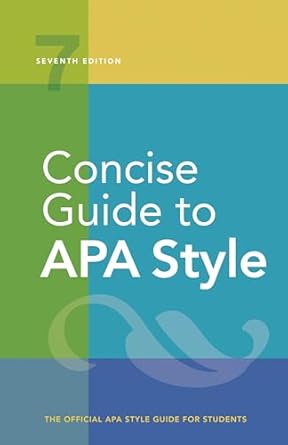[toc]
parentheses usage a guide for clear academic writing
Concise Guide to APA Style: 7th Edition (OFFICIAL)
Page 113 Review
The Nuances of Parenthetical Usage in Academic Writing
In academic writing, parentheses serve various crucial functions, adding clarity and depth to your prose.
However, mastering their usage requires understanding specific guidelines to avoid confusion and maintain a professional tone.
This commentary delves into the proper and improper uses of parentheses, drawing heavily from established style conventions.
Setting Off In-Text Citations
One of the primary uses of parentheses is to enclose in-text citations, providing immediate source attribution.
Examples include:
“Barnes and Spreitzer (2019) described…”
“(Proctor & Hoffmann, 2016)”
These citations allow readers to quickly identify the original source of information, supporting claims and giving credit to the relevant researchers.
Introducing Abbreviations
Parentheses are also employed to introduce abbreviations, ensuring readers understand the meaning of acronyms used throughout the text.
Consider these instances:
“galvanic skin response (GSR)”
“Child Report of Parental Behavior Inventory (CRPBI; Schaefer, 1965)”
By providing the full term alongside the abbreviation, writers prevent ambiguity and enhance readability.
Identifying Items in Lists
Within sentences or paragraphs, parentheses can set off letters that identify items in a list, offering a structured approach to presenting multiple points.
For example:
“The subject areas included (a) synonyms associated with cultural interactions, (b) descriptors for ethnic group membership, and (c) psychological symptoms and outcomes associated with bicultural adaptation.”
This method helps organize information, making it easier for readers to follow complex arguments.
Enclosing Statistical Values
Statistical values, particularly those that do not already contain parentheses, are often enclosed in parentheses to clearly delineate them from the surrounding text.
For instance:
“was statistically significant (p = .031)”
Degrees of Freedom
Parentheses are essential when indicating degrees of freedom in statistical reporting:
“t(75) = 2.19 F(2, 116) = 3.71”
This information is crucial for readers to interpret the statistical results accurately.
Common Mistakes to Avoid
While parentheses are invaluable, certain situations require alternative approaches.
Overusing or misusing parentheses can clutter your writing and undermine its clarity.
Nested Parentheses
Avoid nesting parentheses within each other.
Instead, use square brackets to differentiate levels of parenthetical information:
“(Beck Depression Inventory [BDI]; Beck et al., 1996)”
Square brackets provide a visual cue that distinguishes the inner parenthetical element from the outer one.
Statistics Already Containing Parentheses
When enclosing statistics that already contain parentheses, use a comma before the statistic to avoid nested parentheses:
“were significantly different, F(4, 132) = 13.62, p < .001"
This approach maintains clarity and prevents visual clutter.
Back-to-Back Parenthetical Information
Do not place parenthetical information back-to-back.
Instead, combine the information into a single set of parentheses, separated by a semicolon:
“Correct: (e.g., flow; Csikszentmihalyi, 2014)”
“Incorrect: (e.g., flow) (Csikszentmihalyi, 2014)”
This method streamlines the presentation of information and improves readability.
Conclusion
Mastering the proper use of parentheses is fundamental to clear and effective academic writing.
By adhering to these guidelines and avoiding common pitfalls, writers can enhance the precision and readability of their work, ensuring that their message is conveyed accurately and professionally.
Buy full ebook for only $18: https://www.lulu.com/shop/american-psychological-association/concise-guide-to-apa-style-7th-edition-official/ebook/product-rmzpq54.html?page=1&pageSize=4
Parentheses Usage A Guide For Clear Academic Writing
Read more: Paper Structure: Length, Headings, and Organization


Leave a Reply